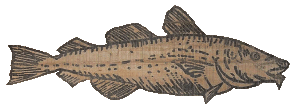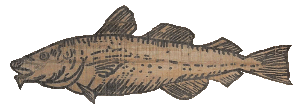Shute & Merchant


Another view showing the wharf that housed the Shute & Merchant fitting out loft. Taken from a vantage point near the Shute & Merchant sail loft, or possibly from the wharf of Charles Harriman. the complete view gives a very good perspective of what Gloucester Harbor looked like when viewed from from the Head of the Harbor.
Immediately out from the wharf where the photo was taken is Five Pound Island. Moses Lufkin, whom Samuel Merchant had worked with in the smoked fish business, had a portion of his business on Five Pound Island. At one point in time, this Island was also known as Friend's Island, and can no longer be seen, as it is now the outer end of the State Pier.
Five Pound Island was captured at even earlier times in some of the sketches and paintings of Fitz Henry Lane. Most likely, its name was taken from the five sheep pounds (pens) holding rams on once located on it, though other tales state it was named for the sum of money settlers paid the local Native Americans for the island.
While thoughts of the Gloucester fish industry might often stir up images of fishing vessels and harbor scenes, the real work of a fish firm such as Shute & Merchant -- packers and dealers of fish products -- often took place inside the buildings surrounding the wharves and flake yard.
Here the photo captures a scene of their fish skinning loft, and the man in the derby hat may be William T. Shute. The fish had to go through a variety of steps before it was ready to be "put up" in boxes. Note that at this stage, part of the fish is neatly stacked, some is captured in large baskets and any scraps appear to be tossed to the floor. Some of the unusable pieces of the fish would later be sold for other uses, including for the making of glue ... another fairly important industry in Gloucester.
Other images of the work inside the Shute & Merchant fish factory were capture in ink illustrations by H. W. Elliott, who was capturing images of the Gloucester fish industry for the United States Fish Commission.
H. W. Elliott worked with T. W. Smillie to produce most of the illustrations used in this Congressional Report, which covered all aspects of the fisheries and fish industry in the United States, and not all of the illustration or engravings submitted were printed, but most survive in the archives of the Smithsonian.
click here for more images by H. W. Elliott
Fish skinning was an essential step in the preparation of the fish before it could be cut or shredded, and those doing the task had to be fast and accurate. For many years fish skinning was an important competition among the various men who did this work throughout Gloucester and New England.
This H. W. Elliott drawing depicts "Brown", the champion fish skinner from Shute & Merchant. There is no record of who this Brown was, or whether or not he was just the champion fish skinner at their firm, or for all of Gloucester at the time of the illustration.
In 1853, a record of skinning a cod in 46 seconds was set by a John Graham. That record held until 1922, when Everett White broke the record by skining a five pound codfish in 37.5 seconds at the Independence Day event. Another Brown from Gloucester was also a fish skinning champion. In 1902, Freeman Brown earned that distinction at a competition in Boston -- he was also a candidate for the Mayor of Gloucester by July of that same year, and was serving as the president of the Fish Skinners' Union.


